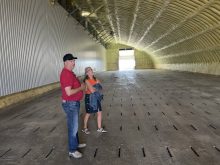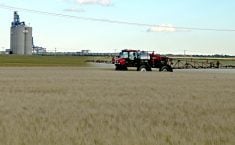Saskatchewan First Nations farmers now have access to environmental programs under the federal-provincial agricultural policy framework.
The First Nations Agricultural Council of Saskatchewan will deliver environmental farm plans designed to address the specific needs of treaty lands.
“The uniqueness of treaty lands is that they’re held in trust … in perpetuity,” said Lloyd Martell, communications director for the Federation of Saskatchewan Indian Nations.
“Individual ownership interests are not paramount.”
He said while economic well-being is important, First Nations are also keenly aware of their role as stewards of the land for cultural reasons. Some have been criticized for leaving their purchased land in what many would deem an undeveloped state, but the First Nation may be sustaining it in its natural state for cultural purposes.
Read Also

New coal mine proposal met with old concerns
A smaller version of the previously rejected Grassy Mountain coal mine project in Crowsnest Pass is back on the table, and the Livingstone Landowners Group continues to voice concerns about the environmental risks.
“From our cultural perspective, we are using it,” Martell said.
Environmental farm plans are voluntary, confidential self-assessments done to identify environmental risks.
FSIN chief Alphonse Bird said the council will work to create greater awareness of sustainable farm practices.
Before the treaty land entitlement process was established in the early 1990s, First Nations owned about two percent of the total land in the province. Once the obligations are fulfilled, that number will double. Martell said the holdings now total about three percent.

















